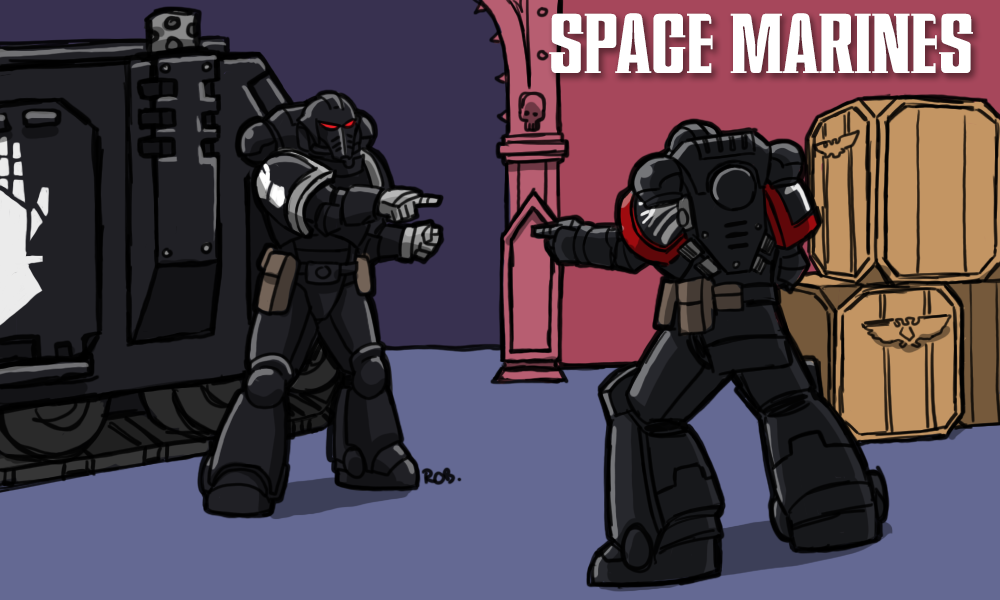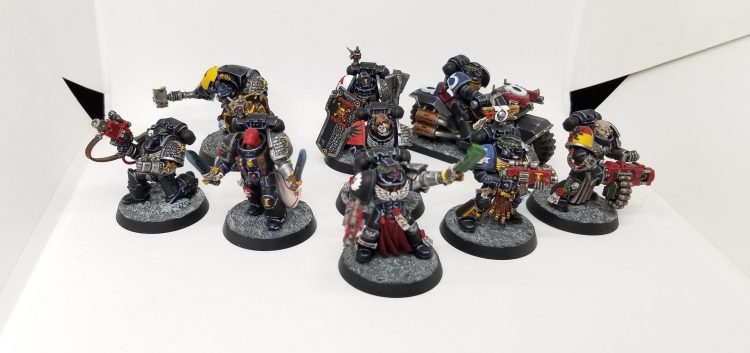The release of the new Codex: Space Marines brings some exciting changes to how Space Marines play across the board. We’ve already talked at length about how this will impact competitive play, but what about those of us who aren’t tournament players?
Well, look no further than the Crusade Rules section in the new codex, which has a slew of rules designed to help add some new twists to your Crusade campaigns. Included in these new rules are a new category of Agendas to pick from, additional Requisitions you can spend those RP on between games, more Battle Traits to help tell the story of how your force grows and evolves over time, a handful of new Crusade Relics to outfit your characters with, and a set of ten Honorifics that will further define how your Captains wage war. Each of these options provides interesting hooks that you can use to tell the story you want to tell with your army.
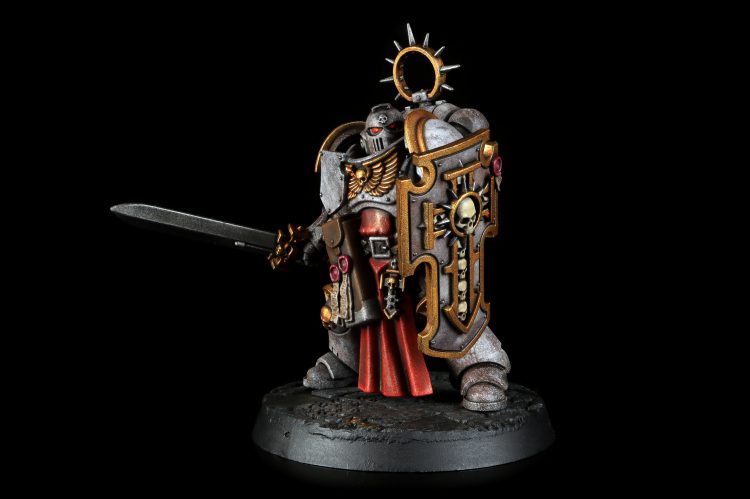
Agendas
There are 5 new Agendas on offer here that give you some new and flavorful objectives to pursue. They’re a new category of Agendas, just like the ones in the Core Rules so you’re only allowed to choose one of these regardless of the size of the game you’re playing.
Angels of Death and Know No Fear are simple and straightforward, but are honestly the least interesting choices. Angels of Death gives you a solid 3 XP to all of your units, but that powerful reward comes at significant risk: you have to table your opponent to get it. If they have a single model on the board at the end of the game, you get no points from this Agenda.
Know No Fear sees you keeping a tally of how many Morale tests each of your units passes, resetting to 0 each time it fails. Each unit will then gain 2XP at the end of the battle for each mark on its tally. While the new And They Shall Know No Fear does make it more likely that you’ll fail a check when you’re forced to take one, 3- and 5-Marine units are unlikely to find themselves in a situation where they’re forced to take a check they can fail. If you’re not sure what to take in a Crusade game and want a simple one that’s likely to pay dividends, you can’t go wrong here. Just keep in mind that it can’t give anything to single-model units.
The other three Agendas are much cooler from a narrative perspective, and if the reason you’re playing is to tell a story with your games, you’ll want to look carefully at these. Quest of Atonement is an Agenda you can only take if you have a unit with the Loss of Reputation, Disgraced, or Mark of Shame Battle Scars, and it gives them an opportunity to win back their good name by hunting down one of the opponent’s most dangerous units. If the unit you chose with that Battle Scar manages to take down an enemy <WARLORD>, <MONSTER>, <VEHICLE>, or a <CHARACTER> with PL 5 or more, not only will they gain 5XP for their trouble, but they’ll lose one of those Battle Scars that they have. If your Warlord has disgraced himself, this will let you put a bow on their redemption narratively, rather than just buying it off with RP. Very cool.
Honour the Standard requires you to take an Ancient of some sort, and lets them take an Action to Plant the Standard within 6” of the center of the battlefield. Once they do, they stand there heroically displaying their battle standard and daring the enemy to come and take it. As long as that model doesn’t make a Normal Move, Advance, Fall Back, or charge, then at the end of your turn, each <CORE> unit that’s wholly within 6” gains a mark on its Honour the Standard tally, and gains 1XP for each mark on that tally at the end of the battle. If you’ve ever wanted to relive that dramatic scene from the opening cinematic of Dawn of War, here’s your chance.
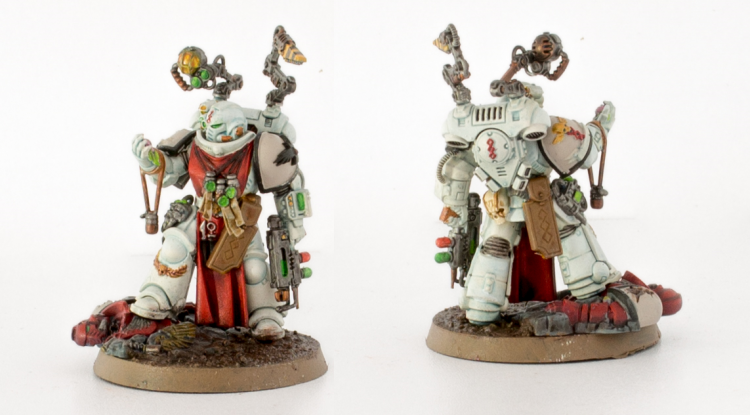
Finally, Recover Gene-Seed is an Agenda for an Apothecary, and is probably my favorite in the book. Your Apothecary has to move to an extra objective marker placed by your opponent anywhere outside their deployment zone. That marker represents a fallen Space Marine hero, and doesn’t count as an objective for any other rules or Agendas. However, if your Apothecary can get to it and take an action to recover the progenoid glands from his fallen brother, you remove the marker from the board and your Apothecary gains 5XP for honoring the hero’s sacrifice. On top of that, your force gains a bonus Requisition Point you can spend to upgrade your roster. Daring missions to recover lost gene-seed are a huge deal in the fluff surrounding apothecaries, and this Agenda lets you work them into any mission. It’s also a solid way to get experience on your Apothecary, something that can be difficult otherwise.
Requisitions
Once you’ve completed a mission, you now have some new options to spend the Requisition Points your command has rewarded you with. All four of these are extremely cool from a fluff perspective, even if you won’t see yourself using them that often. However, if the opportunity presents itself, any of these will let you tell a unique story that will really help make your list your own.
One of my favorite bits in Dawn of War 2 came when a mortally-wounded Davian Thule returned to the battlefield encased in a Dreadnought. Even in Death I Still Serve lets you bring that moment to your own games, allowing you to inter a wounded <CHARACTER> in a battle-sarcophagus so that they can take to the field anew and continue to visit the Emperor’s wrath on his enemies. Mechanically, this is a very slick option – you remove the <CHARACTER> from your Order of Battle, then add a new <DREADNOUGHT> from the same Chapter. Then, you give it the same amount of XP the character it replaced had and it gains however many Battle Honours it would have normally gotten. This means that your new Dreadnought comes into play without the Battle Scars, but keeping the experience that he’d gained while he was still alive. It’s an incredibly cool and flavorful way to do this, and I’m excited to see players use this in my campaigns.
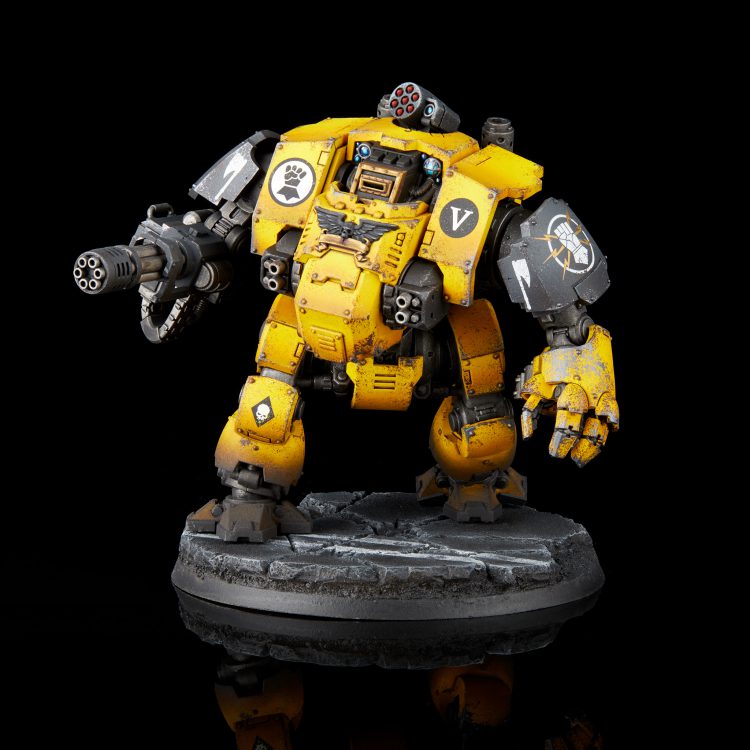
Unfortunately, you can only use it when one of your characters takes their second or subsequent Battle Scar. This means the character has to die, then roll a 1 on the Out of Action check, then choose to take a Battle Scar, then do that again. Assuming the Character dies in its first two games (not that that’s hard to do if you try), you’ve got a 1-in-36 chance of having this available to you as an option. And when you do finally get that second scar on the guy you want to inter, if you don’t take it immediately you’ll have to wait for another 1-in-6 roll to take a third scar before you get another chance. In other words, if you want to Dread-ify a particular character and you get the chance, jump on it. It might be a while before you get another one.
The new Chapter Command rules are very cool, and offer a way to play with some of the most important characters in your Chapter. However, as the rules on pg 98 make clear, “[a] Crusade force cannot start with any upgraded <CHARACTER> units – to include one in a Crusade force, you must use the Chapter Command Requisition (pg 116).” That Requisition costs 1RP, and lets you upgrade one of your Characters when they hit Heroic or Legendary rank. This lets you tell the story of your Marines being recognized for their great deeds by being elevated to Chapter Command and all the power that comes with such a promotion. This is a really cool Requisition, as it provides a goal you could set for your Warlord – a battleforce led by a Techmarine could see him working over time to eventually be installed as his Chapter’s Master of the Forge, which would be a really cool moment in the evolution of your Crusade force.
Not all Space Marines are fresh recruits, and the Indomitus Crusade Veterans requisition lets you bring in reinforcements that are already Blooded. You can use this Requisition when you bring in an Elites unit to give it 6XP and the associated Battle Honour right out of the gate. Of the Requisitions on offer here, this is probably the least interesting, but it’s the one that you’ll use the most – the codex has no shortage of Elites choices, and bringing them in with a Battle Honour already on their card lets you make them even cooler.
Finally, your characters have the chance to follow the example of Marneus Calgar and cross the Rubicon Primaris. This isn’t without risk, though – there is always a chance that an aspiring Primaris Marine will die on the operating table, as the process of implanting the additional organs is a traumatic one. When you take this Requisition, you choose an appropriate non-Primaris <CHARACTER> and roll a d6. On a 2+ the operation was successful, and you replace the character with an appropriate Primaris version (so a Captain becomes a Primaris Captain) with the same experience, Battle Honours, and Battle Scars as he had before his ascension. On a 1, the Apothecarion’s efforts are in vain, and all that is left is to recover the dead Marine’s progenoid glands and hope for better luck with the next one. In this event, you just remove the Marine from your Order of Battle. This is one of the only ways a unit can just outright die in Crusade, so the risk is high. But that risk comes with serious rewards, and a character who has crossed the Rubicon Primaris and lived to tell about it will be a potent force for the Imperium, as well as the center of a strong narrative.
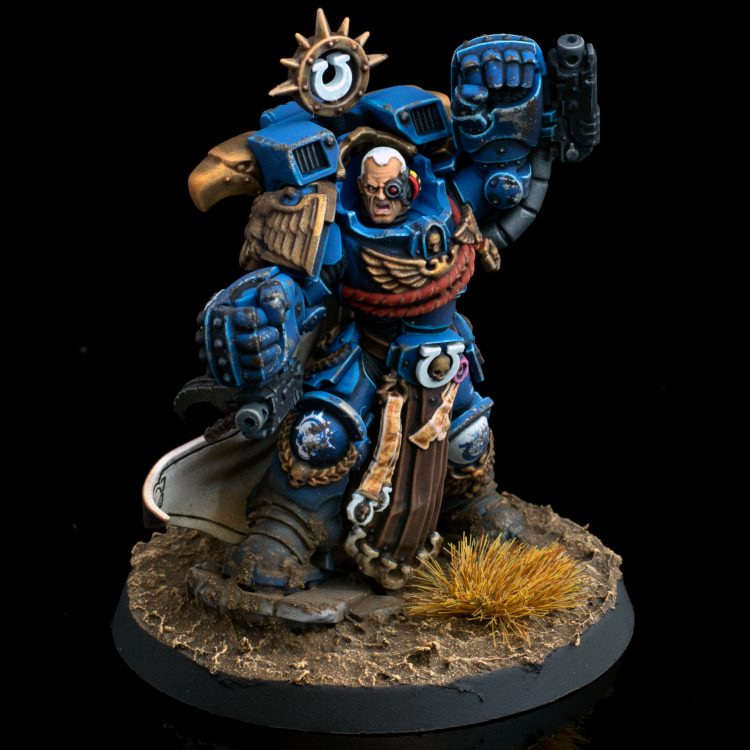
All in all, these Requisitions are all worthwhile inclusions, even if you won’t use most of them that often. They seem to be more focused on creating cool narrative arcs for your force rather than just improving the fighting power of your Order of Battle, which is exactly what I was hoping to see out of new Crusade rules. If this is the sort of thing we can look forward to with future Codexes, then I’m extremely excited to see what bizarre and wonderful options future releases are going to bring to campaigns.
Battle Traits
The new Codex also adds a series of new Battle Traits your marine can earn as they level up in Crusade. The best part about these is that they’re not nearly as redundant as the ones in the Core Rules; that is, you’re less likely to get something on this list that doesn’t do anything for your marines because they already have a specific rule.
Machine Spirit Traits
One of the things I was disappointed to see in the new datasheets was the treatment of the Machine Spirit units – most of them didn’t hit the table often already, and with all vehicles now able to shoot Heavy weapons without penalty, I was hoping that the new effect of the Machine Spirit would be interesting. Unfortunately, the only thing it does is open up the Power of the Machine Spirit stratagem, which lets the vehicle shoot at full profile regardless of how damaged it is for 2CP. Don’t get me wrong, this is a cool effect, but it doesn’t feel as unit-defining as the previous rule.
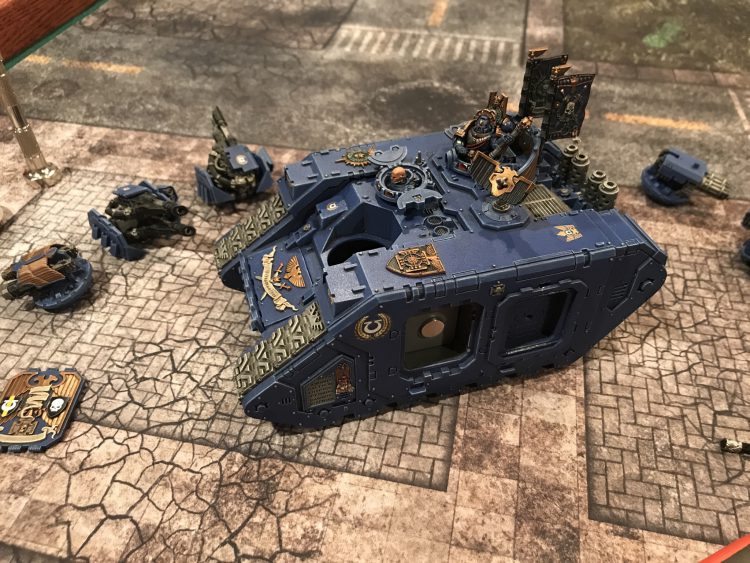
Fortunately, there are a series of new Battle Traits you can only apply to units with the <MACHINE SPIRIT> tag, and they give some character to the various machine spirits that inhabit the vehicles in your force. If a vehicle has a Bellicose Machine Spirit, its WS improves by 3 as it “seeks to grind its foes beneath it.” On the other hand, a Focused Machine Spirit can keep its precision even under the most dire circumstances, letting it shoot at models it’s engaged with at no penalty. Finally, a vehicle with a Resilient Machine Spirit is just flat tougher than others, and has 2 extra wounds.
Character Traits
There are also a pair of traits each for two of your support characters. Each gains a trait that represents their application of their skills to the between battles. Both a Techmarine who gains enough experience to be an Expert Mechanic and an Apothecary whose studies have made them a Master of Physiology allow one of your units to ignore a failed Out of Action test – the Techmarine’s ability applies to a vehicle, while the Apothecary can save any unit other than a <VEHICLE> or <BEAST> from taking a Battle Scar. However, in order to use this, the character must have been deployed to the battle and not destroyed.
The other trait for Techmarines, Bionic Extremis, represents their dedication to the Machine Cult and the fact that many Techmarines are so thoroughly augmented that they may be more machine than man. This extensive modification shows up in the rules as a 5+ invulnerable save.
Meanwhile, an Apothecary who sees himself as a Custodian of the Future will go to any lengths to retrieve the gene-seed of a fallen battle-brother, up to and including carving up anyone who’s standing between him and the progenoid glands he’s charged with retrieving. This gives him an additional 3 attacks in the Fight phase in any turn in which an <INFANTRY> or <BIKER> model from his Chapter has been destroyed.
Generic Traits
There are also six traits you can apply to any unit that isn’t a vehicle, and they all represent various awards and honors that a Chapter might bestow upon a unit or character who acquitted themselves particularly well. Marksman’s Honours are given to the most skilled marksmen in the Chapter as proof of their superlative skills, and increase the BS of each model in the unit by 1. The Aquila Imperialis is awarded to recognize those units who fight on against the most terrible odds, and allows the unit who holds it to re-roll a failed Out of Action test to represent their incredible tenacity. A unit blessed with Purity Seals can leverage its faith in the Emperor to attempt to deny one power each phase as though it were a Psyker. If it is a Psyker, it gets an extra deny. The Bladesman’s Honour badge is evidence that the Marine bearing it is a duellist of unrivaled skill, and increases the WS of any unit who has earned it by 1. A model who has earned Terminator Honours gains +1 to attacks, leadership, and (as long as it isn’t a CHARACTER) wounds, turning your favorite squad’s Veteran Sergeant into a miniature monster in his own right. Finally, Centurios Service Studs are given out to those marines who have been fighting for over a hundred years, and that experience shines through in their ability to choose what doctrine is active for their attacks rather than using the one your army is in.
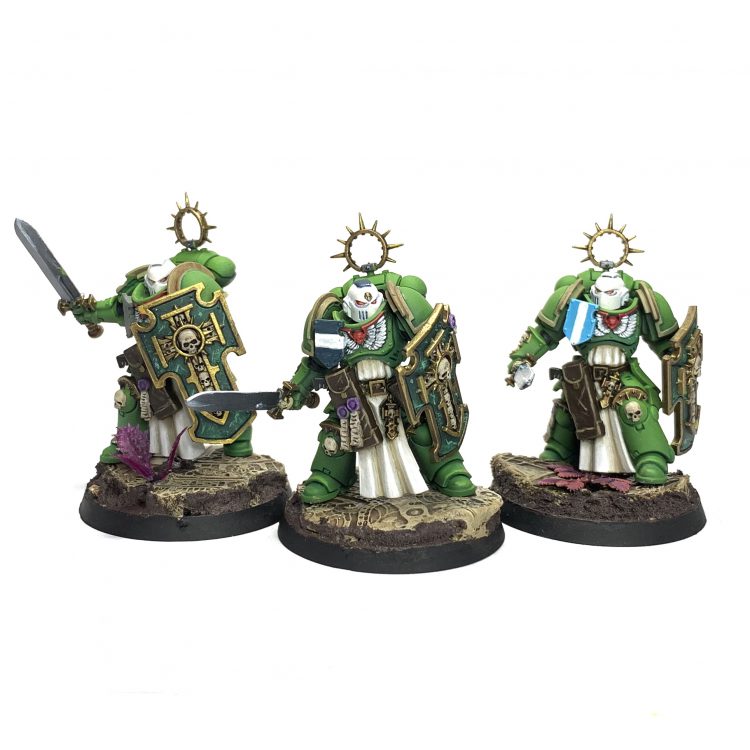
While you could roll on the tables for these traits, consider keeping track of your units’ exploits and giving them a Battle Trait that corresponds to it. A squad of stalker bolt rifle-equipped Intercessors who take out a key unit at just the right time are deserving of Marksman’s Honours. Those Infiltrators who survived an incredible amount of incoming fire in order to hold an objective and deliver you victory displayed tenacity and dogged resilience worthy of the Aquila Imperialis. And that Techmarine who got absolutely shredded by those Tyranids could be rebuilt in Bionic Extremis and return to the fray, bent on revenge and harder than ever to put down. Any of these traits would be an excellent addition to your roster, and they’re characterful enough to be worth modelling onto your units.
Rob’s Note: Frankly, I’m a little wary of the stat increases for WS and BS because they let you get into some truly insane shit like BS 2+ Eradicators or permanently Devastator Doctrine Iron Hands Suppressors. It’s a neat upgrade otherwise but this is where I wish we had something more like skill trees or gated upgrades because comparing the relative value of some of these is insane. Though as a GM there’s no way I’m ever letting players choose these – the combinations you can make get stupid good very quick. I do think it’s cool that you can combine the Aquila Imperialis with the Know No Fear Agenda to make scoring XP easier.
Honorifics
In addition to the standard Battle Traits, Space Marine Captains have access to Honorifics, special bonuses you can choose to add instead of a Battle Trait. A model can only have one Honorific, two models can’t have the same one, and you can’t give them to Deathwatch Captains. Chapter Masters can’t have them either, and if you wind up upgrading your Captain they lose their Honorific.
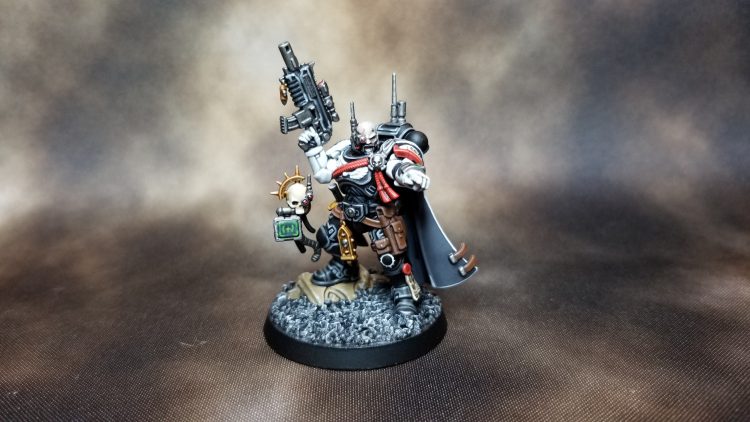
Otherwise, these are like cool titles for your Captain that mark them as having a special role in the chapter, such as Master of the Keep, which lets you use a single Space Marines Battle Tactic Stratagem for free once per battle. Or Master of the Rites, which gives you a free Warlord Trait. Master of Relics gives you free use of the Relic Requisition, allowing you to stack your army with relics. It seems insanely powerful to me to have one of these generate 6+ free RP in the form of upgrades so I don’t love these, but they are a cool way to handle upgrading your captain to be the chapter’s Lord Executioner, and I’ll take any excuse to dig out those extremely cool [N]th Company Captain models.
Crusade Relics
Space Marines get their own Crusade Relics! These give you a few extra options for upgrading the army that are unique to Crusade games. These are pretty damn powerful overall; Adamantine Cuirass increases your model’s Toughness and Wounds by 1, the Halo Indomitus gives you a 4+ invulnerable save and a 4+ roll to ignore mortal wounds. The stupidly powerful Vortex Bolts give you a once-per-game bolter firing option that does D3+3 mortal wounds to anything you hit once per battle. I can already envision the nightmare of a Phobos Captain with an Instigator Bolt Carbine using these to just completely murk characters from 30” away. On the other hand, Relic of the Primarch is exactly the kind of thing they should do more of – a powerful relic with a cool once per game effect that adds a new Agenda to every game you bring it: End the game with it in a model’s possession and you get +3 experience points. End the game without it and you lose 10 Victory Points. It’s the kind of thing that makes for great campaign hooks – having the chapter go to great lengths to recover a sacred relic of their Primarch after losing it in battle is such a cool idea.
On the March
All in all, these Crusade options are extremely cool. While there is a bit of power disparity in most of the categories, there aren’t many options here that aren’t worth it from a narrative perspective. However, given the variance in how strong some of these new features can be, you may want to be careful with what you bring – there are a few options that we can already foresee causing some serious problems on the table. With a bit of care, though, you’ll be able build a Crusade roster that uniquely yours, and every new game will see you adding to their saga. If this is a sign of what’s coming for the other factions, we can’t wait to see what’s up next.
